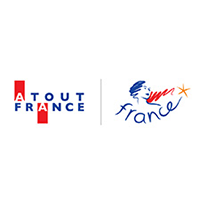Thailand
Heiress of a rich Buddhist and cultural tradition, Ubon Ratchathani, the capital of the province of the same name, is one of the most captivating destinations in Isan.
The "royal city of the lotus," as Ubon Ratchathani translates literally, owes its tourist success to its natural setting, as it is the meeting point of the Mun River and the Mekong. Visitors explore caves, swim at the foot of waterfalls, navigate, picnic, and enjoy examining mushroom-shaped rocks adorned with rock carvings. Local women weave handbags and silk accessories that you can take home as travel gifts.
The allure of Ubon Ratchathani extends beyond the richness of its natural resources. It is also a pious, cultural, and festive city. From Wat Supattanaram to Wat Phra That Nong Bua, from Wat Pah Nanachat to Wat Nong Pah Pong, temple visits demonstrate how intact and deeply rooted Buddhist beliefs are in daily life. The annual candle festival is a must-see event in this regard.
Book your flight to Ubon Ratchathani today and experience an unforgettable road trip in southern Isan.
Historical notes
The history of Ubon Ratchathani is closely linked to that of Cambodia and Laos. The present city was established in the late 18th century when King Taksin the Great brought the northeastern region under his rule. It had long been a Khmer dependency before coming under the Ayutthaya flag around 1300, when the troops of Ramathibodi I crushed the Khmers. In 1767, the Burmese put an end to Ayutthaya's reign. Phra Phutthayotfa Chulalok, assassinating King Taksin, took control of central Thailand. To unify the city of Ubon, which was then scattered into small tribal groups, he promised noble titles to tribal leaders who pledged allegiance to him. This was done around the 1790s. Of all these local leaders, the one who gathered the largest colony was Chao Kham Phong, a nobleman from Laos who fled the kingdom of Vientiane. In exchange for his loyalty, King Rama I appointed him governor.
Ubon played a key role during World War II. When the troops of the Japanese Imperial Army brought back the prisoners of war who survived on the Death Railway from Kanchanaburi, the locals welcomed them willingly, and their help was instrumental in the social reintegration of the soldiers. Thong Si Muang Park in the city center is a memorial built as a token of appreciation for the city's generosity.
Laotian influence is evident in the architecture, craftsmanship, tapestries, and local cuisine.
Today: a booming tourist city
Located in the far east of Thailand, Ubon Ratchathani is renowned for its "picturesque natural landscapes" due to the confluence of "the Mun River and the Mekong." If these words from the Thai Tourism Office are accurate, they are too weak to fully capture the region's tourism potential.
Ubon is one of the four main cities in Isan, along with Khon Kaen, Nakhon Ratchasima, and Udon Thani. Its population exceeds 200,000. Buddhist temples flourish in the forests like numbers on a multiplication table. Monks enjoy meditating in the woods, merchants display silk clothes or handmade jewelry, food enthusiasts roam the stalls of the night market, and the youth enjoy the nightlife in Srinarong's nightclubs. More than ever, Ubon Ratchathani combines tradition and urban leisure.
Must-see attractions in Ubon Ratchathani
To answer the question "What to see and do on site?" know that the list of points of interest does not fit on one page. Depending on your preferences, you can opt for a spiritual experience, a beach outing, a backpacking hike, or a heritage tour.
Religious heritage
Do you love ancient stones? Ubon Ratchathani has plenty to offer:
- Wat Nong Pah Pong: This 20th-century monastery is nestled in the depths of a wild forest. Venerable monk Ajaan Mun intentionally chose this location for monastic life needs. Ajaan Mun's disciples adhere to Theravada Buddhism rules, including wandering in the forest.
- Wat Phra That Nong Bua: 3 km outside the city stands Wat Phra That Nong Bua, a prestigious Buddhist temple. People come here to admire the white stupa with glittering gold, reminiscent of another stupa, the Mahabodhi in Bodh Gaya. The Indian temple of Mahabodhi marks the spot where Lord Gautama attained enlightenment under a fig tree.
- Wat Thung Si Muang: This temple is worth a visit for its magnificent setting by the Mun River. Hat off to the wooden bell tower, which sets a record height in the country!
- Wat Pah Nanachat: Opened in 1975, this temple-monastery houses a community of English-speaking monks from all continents. It stands next to Wat Nong Pah Pong. Its location in the middle of the forest is conducive to meditation and inner peace.
Natural heritage
- Hat Salung: This sandy tongue is ideal for picnicking or indulging in the delights of idleness. It offers a stunning view of the Mekong, with the rural landscapes of Laos visible on the other side of the riverbank.
- Hat Wat Tai: a hundred meters from the Mun River, there is an island bordered by a lovely little beach: Hat Wat Tai. Bars and restaurants flock here for tourists' happiness. The recommended place for a bachelor party or a romantic evening.
- Kaeng Tana National Park: covering about 8,000 hectares, this park is home to rock formations and spectacular waterfalls. Deer, macaques, and wild boars will accompany you along the way!
Museums
- Ubon Ratchathani National Museum: the old municipal palace now hosts the province's most prestigious museum. Visitors will find an elegant tableau of Ubon's culture, music, and artistic creativity. The museum's centerpiece is the image of Shiva and Sati merged into one flesh, commonly called Ardhanarishvara and dated from the 9th century. The collection covers the period from prehistoric rock art to the 20th century.
- Ubonnithat Culture Display Museum: Where the national museum exhibits impressive period objects, the Ubonnithat Culture Display Museum offers more contemporary artifacts closer to local life. The exhibition highlights the science of herbs, weaving, basketry, candle sculpture, and Laotian songs. You will find the establishment on the ground floor of the Ubon Ratchathani Art and Culture Center, located within the Rajabhat University compound.
The candle festival
If your vacation in Ubon is scheduled for July, do not miss the candle festival under any circumstances. This cultural event brings together a huge crowd. Floats decorated with giant candles parade through the streets. Behind them walk dancers dressed in folk costumes; Thung Si Mueang, the city's central square, is enlivened by a sound and light show. The festival lasts for two consecutive days: on the day of Wan Asanha Bucha, when Buddha delivered his first sermon, and on the day of Wan Kao Pansa, which marks the beginning of the rainy season. For your information, Ubon is not the only Thai city to observe this festival; it is everywhere in the country, but Ubon's carved candle parade remains the most famous.
Practical information
Best time to go
Ubon Ratchathani is a tropical region par excellence. It is constantly hot, summer or winter, with minimal temperature variations between seasons. It rains for six months of the year, although the heaviest rainfall is recorded in June, July, and August. To travel to Ubon under the best weather conditions, tourists are advised to book between November and February.
How to get there?
With the many means of transportation serving the city, traveling to Ubon Ratchathani has never been easier.
By air
Tourists can take a plane to Ubon from Don Mueang International Airport in Bangkok. A few flights per week are available from Phuket and Chiang Mai. For budget travel to Ubon, the option of a connecting flight is the best.
By road
Ubon Ratchathani Airport is only 5 km from the city center by road. There are two taxi stands at the airport terminal exit. The taxi will drop you off at your hotel for 100 baht (€2.8). Otherwise, you can rent a car. By following road 24 straight ahead, you will reach Ubon city center in less than fifteen minutes.
By train
Taking the night train is also an option if you want to travel cheaper and save precious time on the journey. The ticket for the Bangkok-Ubon Ratchathani express train is only €56 for first class. But beware; patience is required. Thai trains are known for their legendary delays.
You will love…
- walking in Buddhist temples and pagodas;
- sharing the mystical life of forest monks;
- admiring the stupa of Wat Phra That Nong Bua, a faithful replica of the Mahabodhi stupa;
- paying homage to Thailand's largest wooden bell tower;
- attending the candle festival;
- enjoying the sandy beaches of the Mekong;
- seeing the magic of the sunset over the river.

